文章目录
一、JSP概述
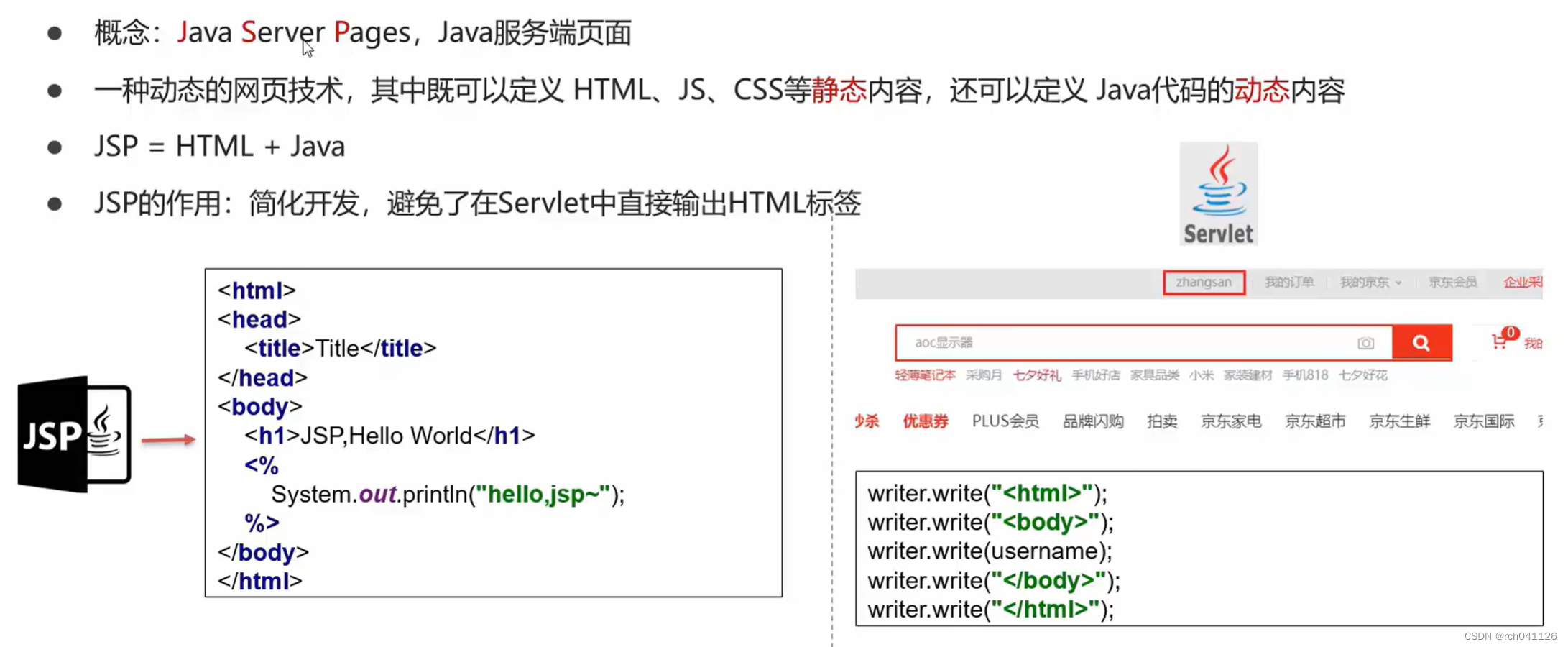
二、JSP快熟入门
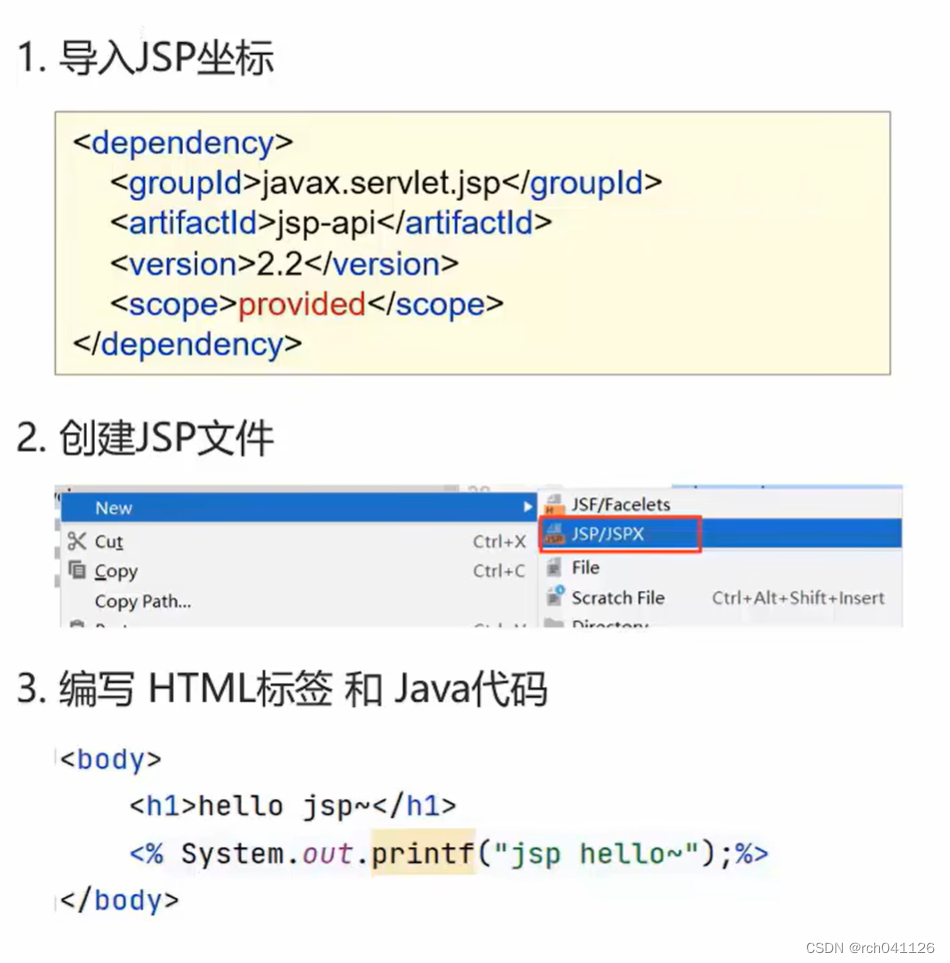
导入JSP坐标
<dependency>
<groupId>javax.servlet.jsp</groupId>
<artifactId>jsp-api</artifactId>
<version>2.2</version>
<scope>provided</scope>
</dependency>
编写HTML文件和Java代码
<%@ page contentType="text/html;charset=UTF-8" language="java" %>
<html>
<head>
<title>Title</title>
</head>
<body>
<h1>hello jsp</h1>
<%
System.out.println("hello,jsp~");
%>
</body>
</html>
三、JSP原理
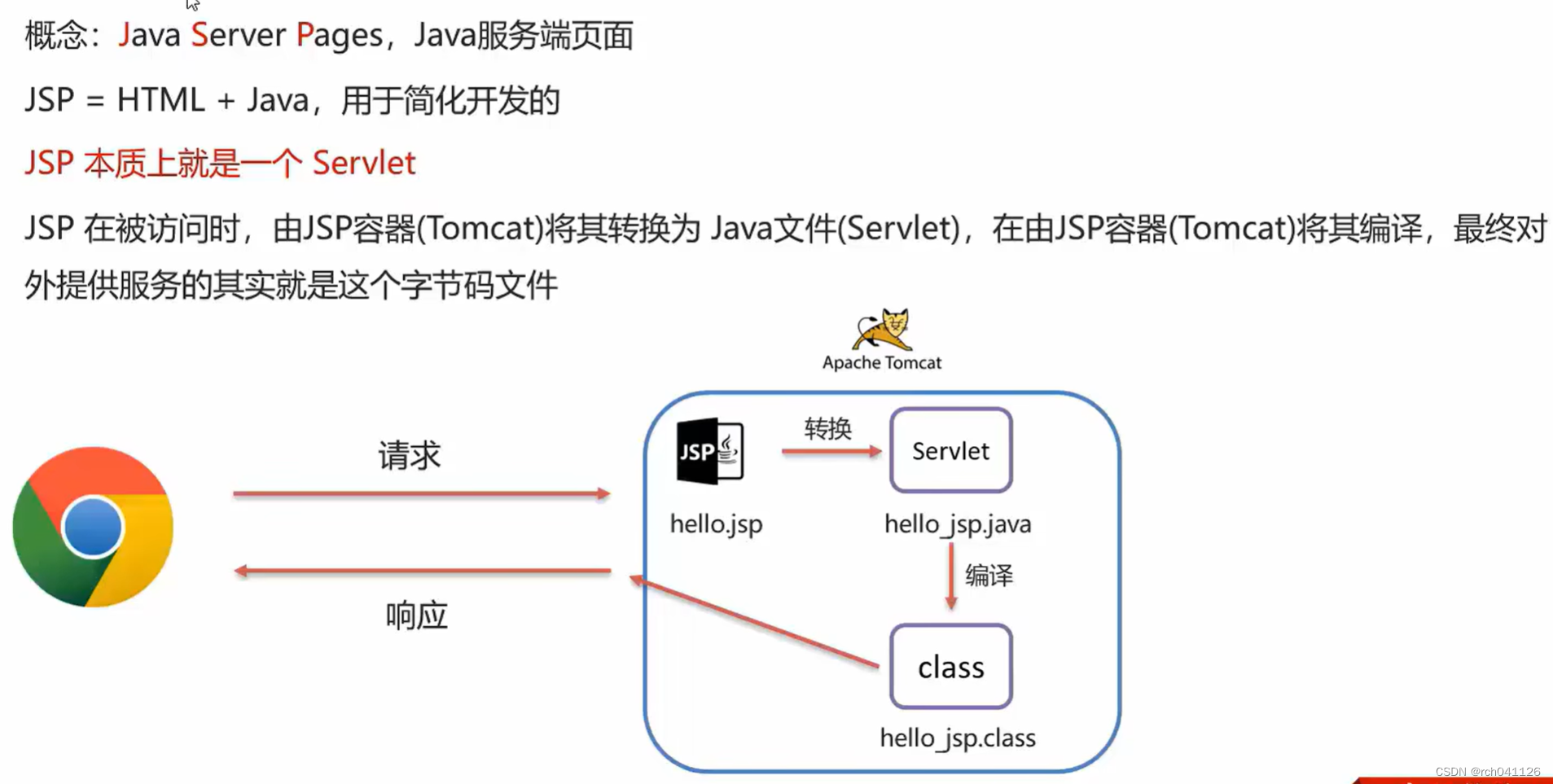
四、JSP脚本
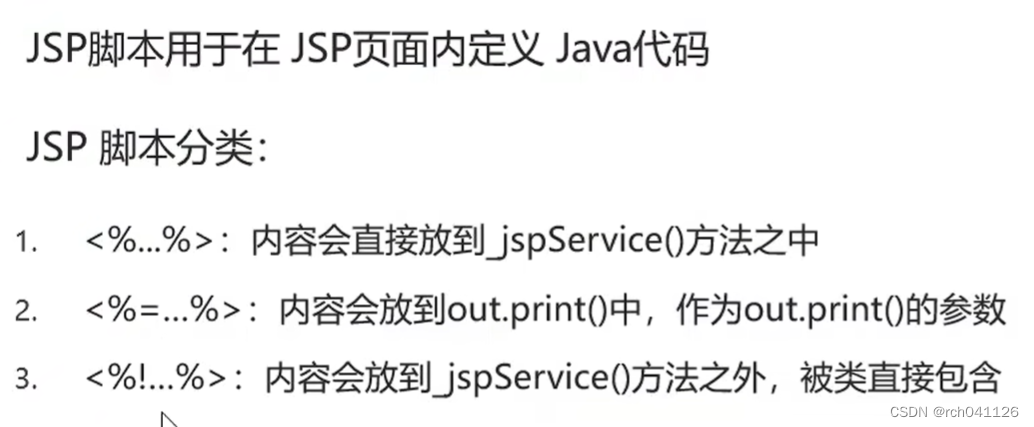
<%@ page contentType="text/html;charset=UTF-8" language="java" %>
<html>
<head>
<title>Title</title>
</head>
<body>
<h1>hello jsp</h1>
<%
System.out.println("hello,jsp~");
int i = 3;
%>
<%="hello"%>
<%=i%>
<%!
void show(){}
String name = "zhangsan";
%>
</body>
</html>
JSP脚本案例

品牌实体类
package com.itheima.pojo;
/**
* 品牌实体类
*/
public class Brand {
// id 主键
private Integer id;
// 品牌名称
private String brandName;
// 企业名称
private String companyName;
// 排序字段
private Integer ordered;
// 描述信息
private String description;
// 状态:0:禁用 1:启用
private Integer status;
public Brand() {
}
public Brand(Integer id, String brandName, String companyName, String description) {
this.id = id;
this.brandName = brandName;
this.companyName = companyName;
this.description = description;
}
public Brand(Integer id, String brandName, String companyName, Integer ordered, String description, Integer status) {
this.id = id;
this.brandName = brandName;
this.companyName = companyName;
this.ordered = ordered;
this.description = description;
this.status = status;
}
// getId ${brand.id} Id getId
public Integer getId() {
System.out.println("getId方法被调用了...");
return id;
}
public void setId(Integer id) {
this.id = id;
}
public String getBrandName() {
return brandName;
}
public void setBrandName(String brandName) {
this.brandName = brandName;
}
public String getCompanyName() {
return companyName;
}
public void setCompanyName(String companyName) {
this.companyName = companyName;
}
public Integer getOrdered() {
return ordered;
}
public void setOrdered(Integer ordered) {
this.ordered = ordered;
}
public String getDescription() {
return description;
}
public void setDescription(String description) {
this.description = description;
}
public Integer getStatus() {
return status;
}
public void setStatus(Integer status) {
this.status = status;
}
@Override
public String toString() {
return "Brand{" +
"id=" + id +
", brandName='" + brandName + '\'' +
", companyName='" + companyName + '\'' +
", ordered=" + ordered +
", description='" + description + '\'' +
", status=" + status +
'}';
}
}
JSP页面
<%@ page import="com.itheima.pojo.Brand" %>
<%@ page import="java.util.List" %>
<%@ page import="java.util.ArrayList" %>
<%@ page contentType="text/html;charset=UTF-8" language="java" %>
<%
// 查询数据库
List<Brand> brands = new ArrayList<Brand>();
brands.add(new Brand(1,"三只松鼠","三只松鼠",100,"三只松鼠,好吃不上火",1));
brands.add(new Brand(2,"优衣库","优衣库",200,"优衣库,服适人生",0));
brands.add(new Brand(3,"小米","小米科技有限公司",1000,"为发烧而生",1));
%>
<!DOCTYPE html>
<html lang="en">
<head>
<meta charset="UTF-8">
<title>Title</title>
</head>
<body>
<input type="button" value="新增"><br>
<hr>
<table border="1" cellspacing="0" width="800">
<tr>
<th>序号</th>
<th>品牌名称</th>
<th>企业名称</th>
<th>排序</th>
<th>品牌介绍</th>
<th>状态</th>
<th>操作</th>
</tr>
<%
for (int i = 0; i < brands.size(); i++) {
Brand brand = brands.get(i);
%>
<tr align="center">
<td><%=brand.getId()%></td>
<td><%=brand.getBrandName()%></td>
<td><%=brand.getCompanyName()%></td>
<td><%=brand.getOrdered()%></td>
<td><%=brand.getDescription()%></td>
<%
if(brand.getStatus() == 1){
//显示启用
%>
<td><%="启用"%></td>
<%
}else {
// 显示禁用
%>
<td><%="禁用"%></td>
<%
}
%>
<td><a href="#">修改</a> <a href="#">删除</a></td>
</tr>
<%
}
%>
</table>
</body>
</html>
五、JSP缺点
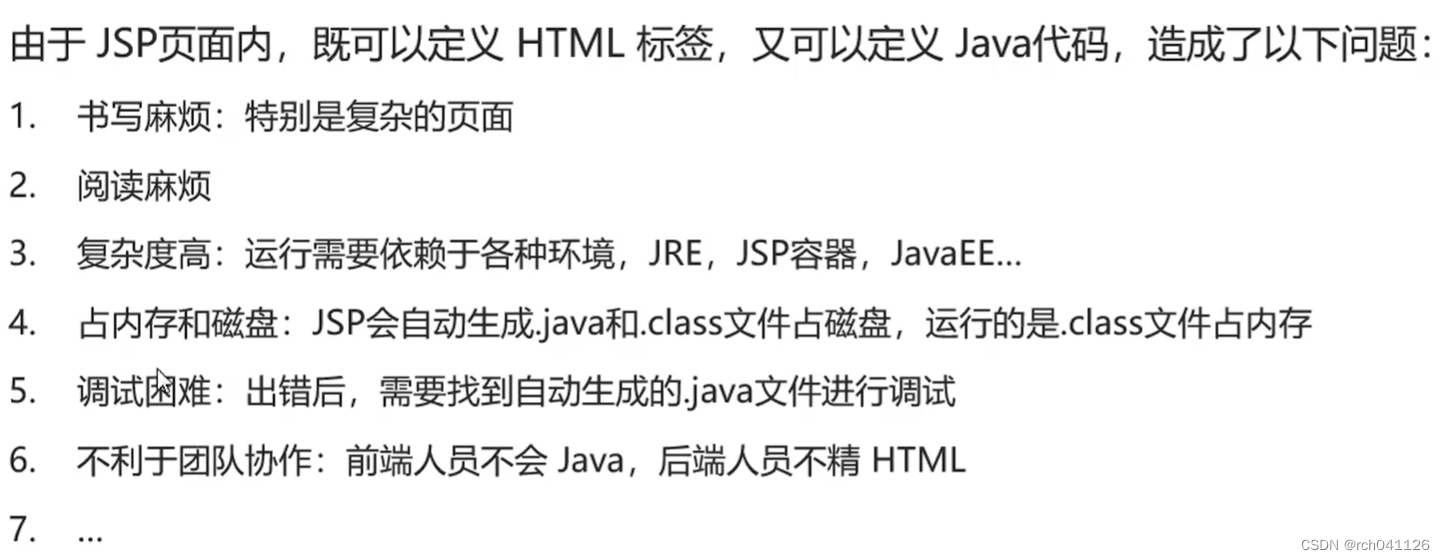

六、EL表达式

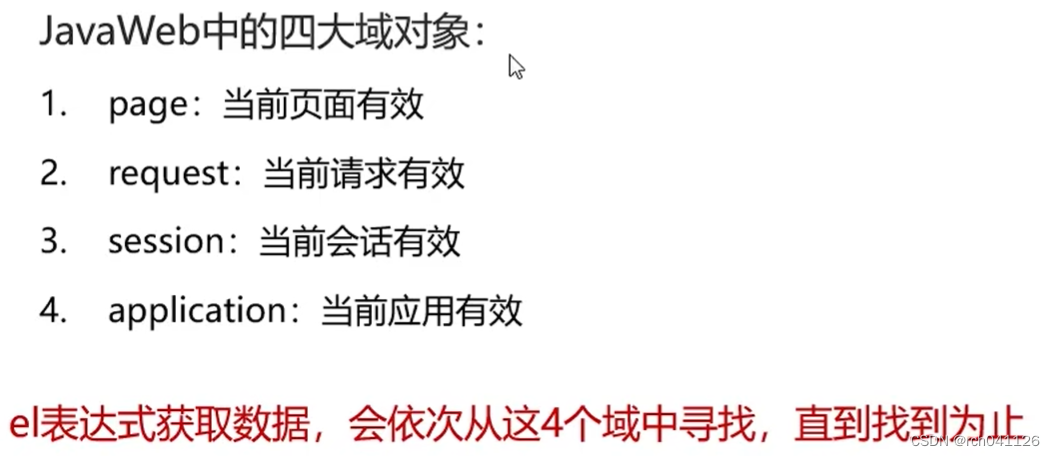

EL代码
<%@ page contentType="text/html;charset=UTF-8" language="java" %>
<html>
<head>
<title>Title</title>
</head>
<body>
${brands}
</body>
</html>
Servlet代码
package com.itheima.web;
import com.itheima.pojo.Brand;
import javax.servlet.*;
import javax.servlet.http.*;
import javax.servlet.annotation.*;
import java.io.IOException;
import java.util.ArrayList;
import java.util.List;
@WebServlet("/demo1")
public class ServletDemo1 extends HttpServlet {
@Override
protected void doGet(HttpServletRequest request, HttpServletResponse response) throws ServletException, IOException {
//1. 准备数据
List<Brand> brands = new ArrayList<Brand>();
brands.add(new Brand(1,"三只松鼠","三只松鼠",100,"三只松鼠,好吃不上火",1));
brands.add(new Brand(2,"优衣库","优衣库",200,"优衣库,服适人生",0));
brands.add(new Brand(3,"小米","小米科技有限公司",1000,"为发烧而生",1));
//2. 存储到request域中
request.setAttribute("brands",brands);
request.setAttribute("status",1);
//3. 转发到 el-demo.jsp
//request.getRequestDispatcher("/el-demo.jsp").forward(request,response);
//request.getRequestDispatcher("/jstl-if.jsp").forward(request,response);
request.getRequestDispatcher("/jstl-foreach.jsp").forward(request,response);
}
@Override
protected void doPost(HttpServletRequest request, HttpServletResponse response) throws ServletException, IOException {
this.doGet(request, response);
}
}
七、JSTL标签
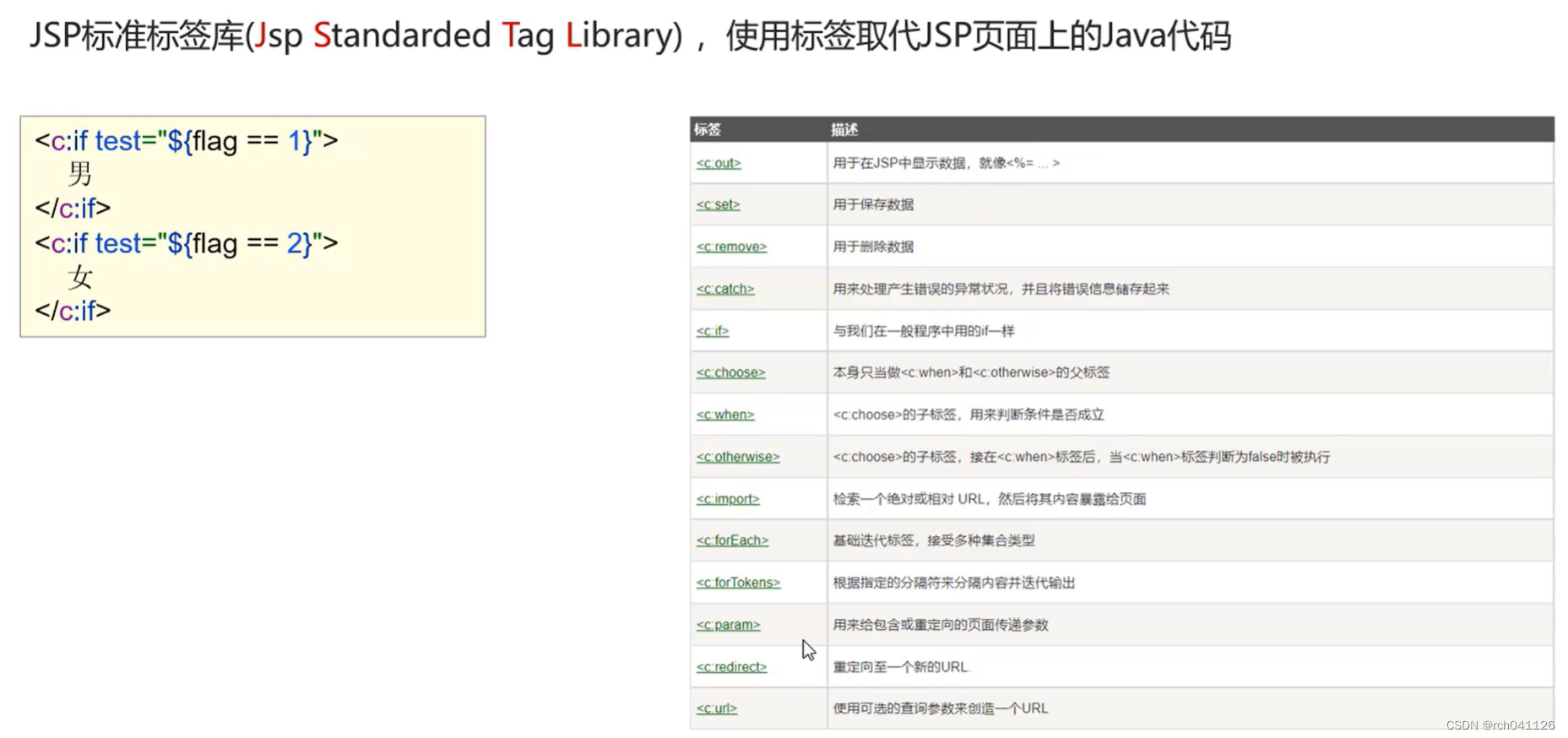
1、<c:if>标签
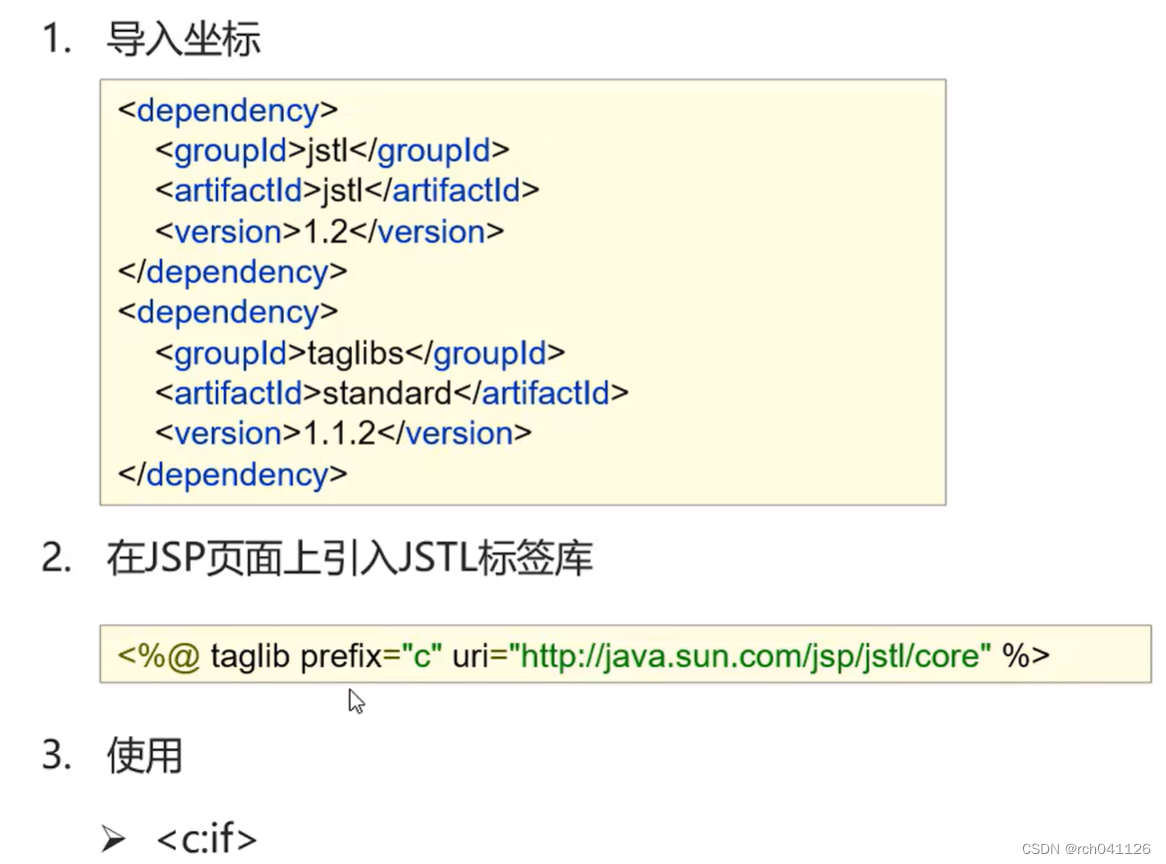
导入jstl坐标
<!--jstl-->
<dependency>
<groupId>jstl</groupId>
<artifactId>jstl</artifactId>
<version>1.2</version>
</dependency>
<dependency>
<groupId>taglibs</groupId>
<artifactId>standard</artifactId>
<version>1.1.2</version>
</dependency>
<c:if>演示
<%@ page contentType="text/html;charset=UTF-8" language="java" %>
<%@ taglib prefix="c" uri="http://java.sun.com/jsp/jstl/core" %>
<html>
<head>
<title>Title</title>
</head>
<body>
<%--
c:if:来完成逻辑判断,替换java if else
--%>
<%--
<c:if test="true">
<h1> true</h1>
</c:if>
<c:if test="false">
<h1> false</h1>
</c:if>
--%>
<c:if test="${status ==1}">
启用
</c:if>
<c:if test="${status ==0}">
禁用
</c:if>
</body>
</html>
2、<c:foerEach>标签
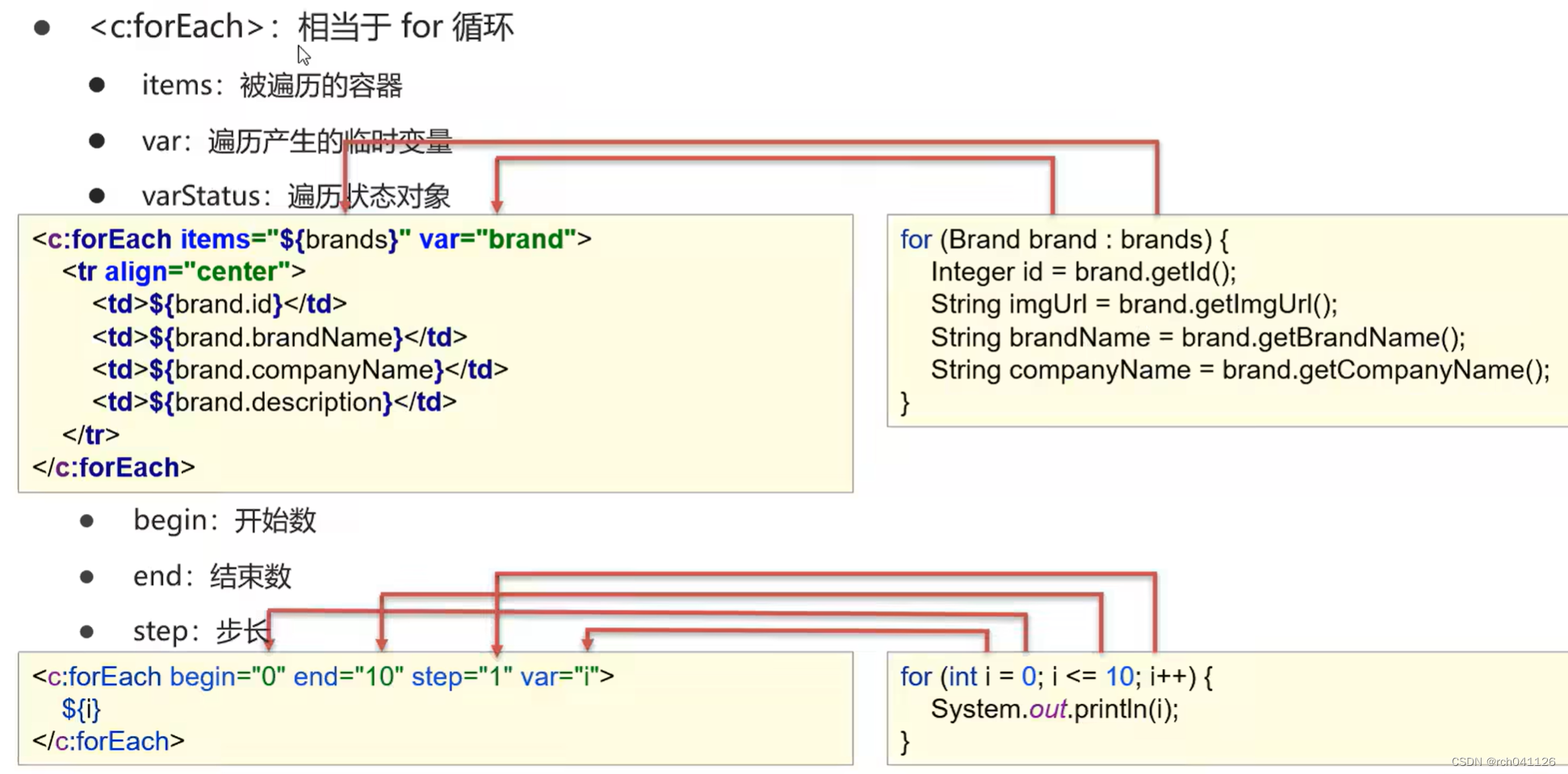
<c:foerEach>演示
<%@ page contentType="text/html;charset=UTF-8" language="java" %>
<%@ taglib prefix="c" uri="http://java.sun.com/jsp/jstl/core" %>
<!DOCTYPE html>
<html lang="en">
<head>
<meta charset="UTF-8">
<title>Title</title>
</head>
<body>
<input type="button" value="新增"><br>
<hr>
<table border="1" cellspacing="0" width="800">
<tr>
<th>序号</th>
<th>品牌名称</th>
<th>企业名称</th>
<th>排序</th>
<th>品牌介绍</th>
<th>状态</th>
<th>操作</th>
</tr>
<c:forEach items="${brands}" var="brand" varStatus="status">
<tr align="center">
<%--<td>${brand.id}</td>--%>
<td>${status.count}</td>
<td>${brand.brandName}</td>
<td>${brand.companyName}</td>
<td>${brand.ordered}</td>
<td>${brand.description}</td>
<c:if test="${brand.status == 1}">
<td>启用</td>
</c:if>
<c:if test="${brand.status != 1}">
<td>禁用</td>
</c:if>
<td><a href="#">修改</a> <a href="#">删除</a></td>
</tr>
</c:forEach>
</table>
<hr>
<c:forEach begin="1" end="10" step="1" var="i">
<a href="#">${i}</a>
</c:forEach>
</body>
</html>
八、MVC 模式和三层架构
1、MVC 模式
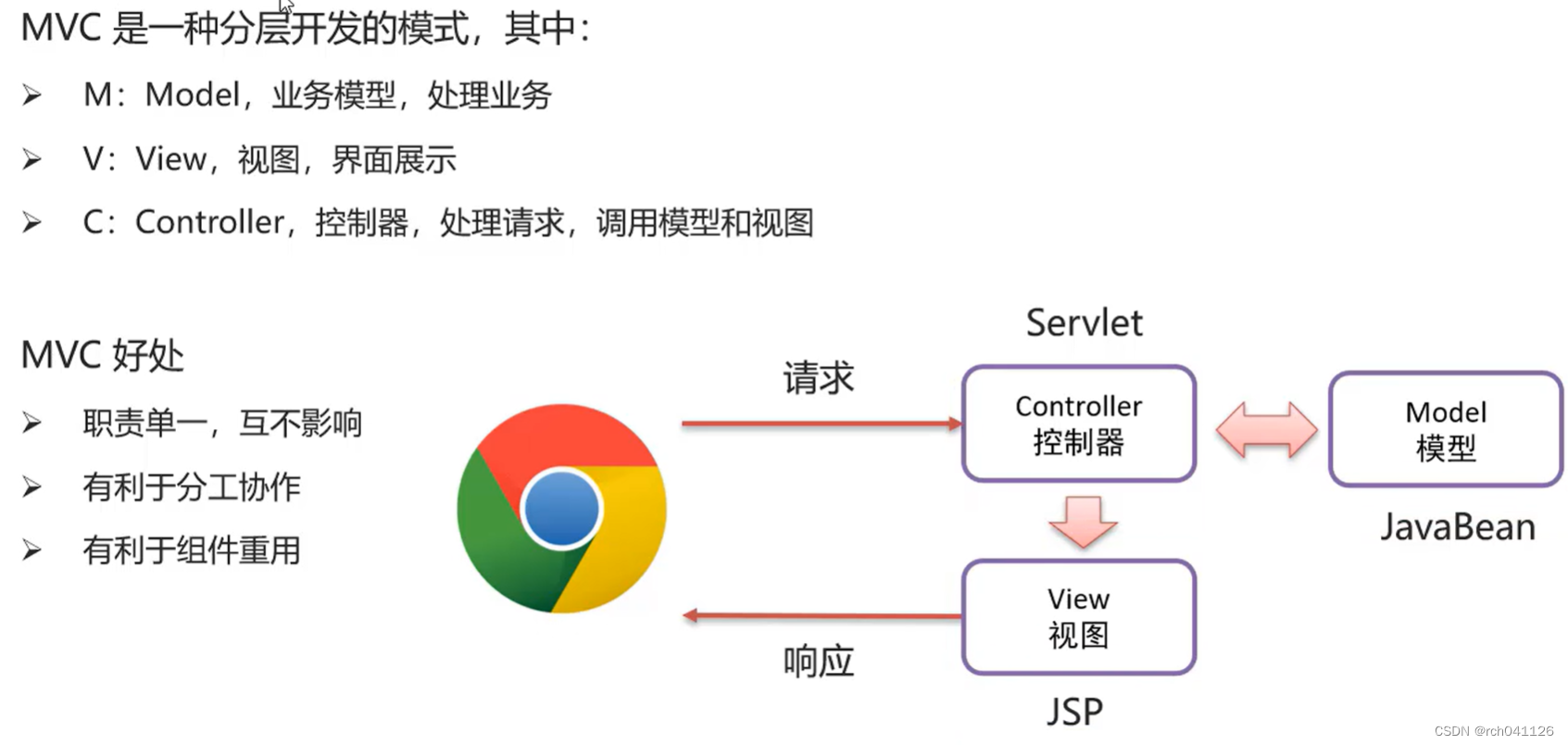
2、三层架构
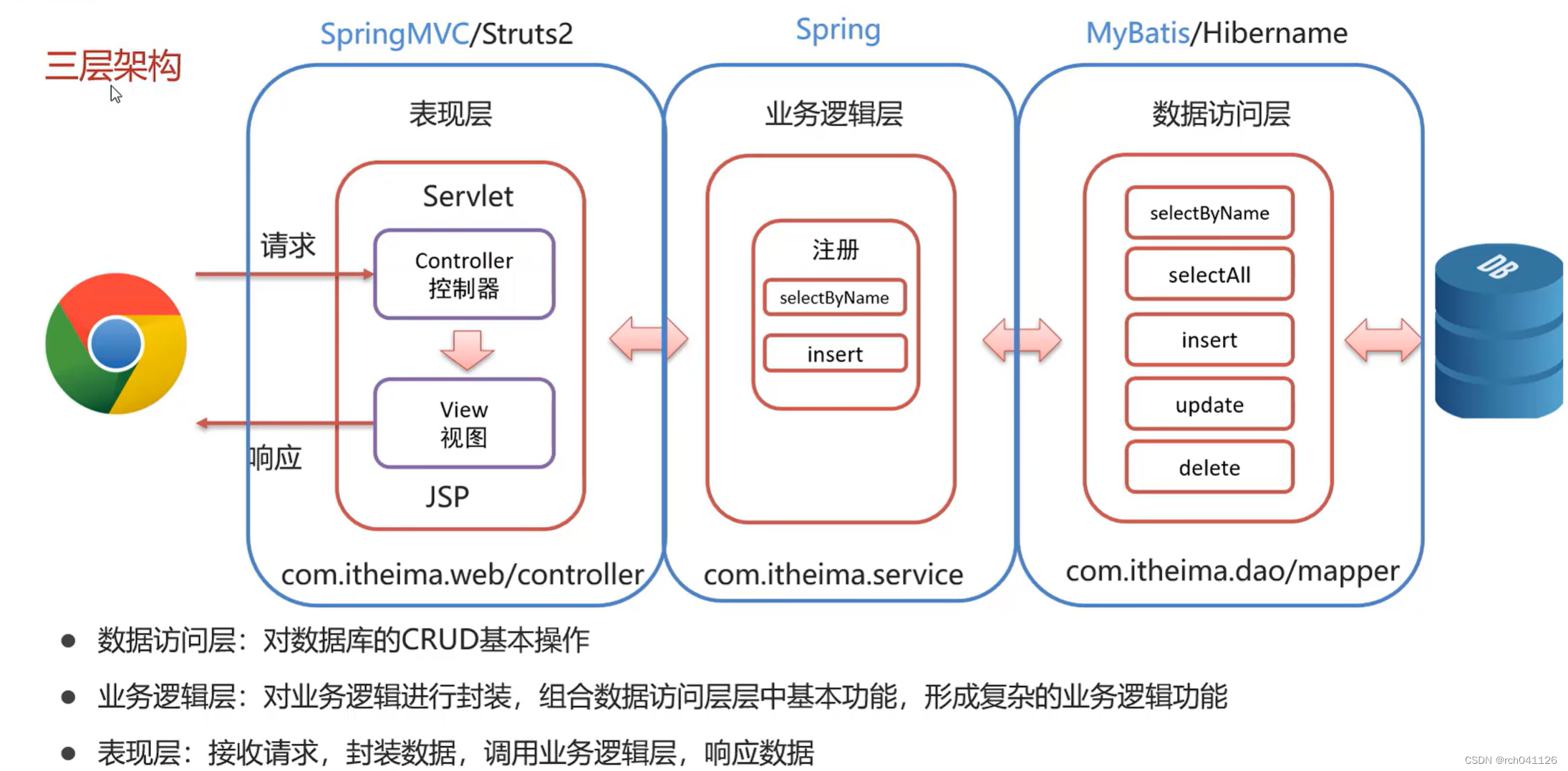
3、MVC 模式和三层架构的区别
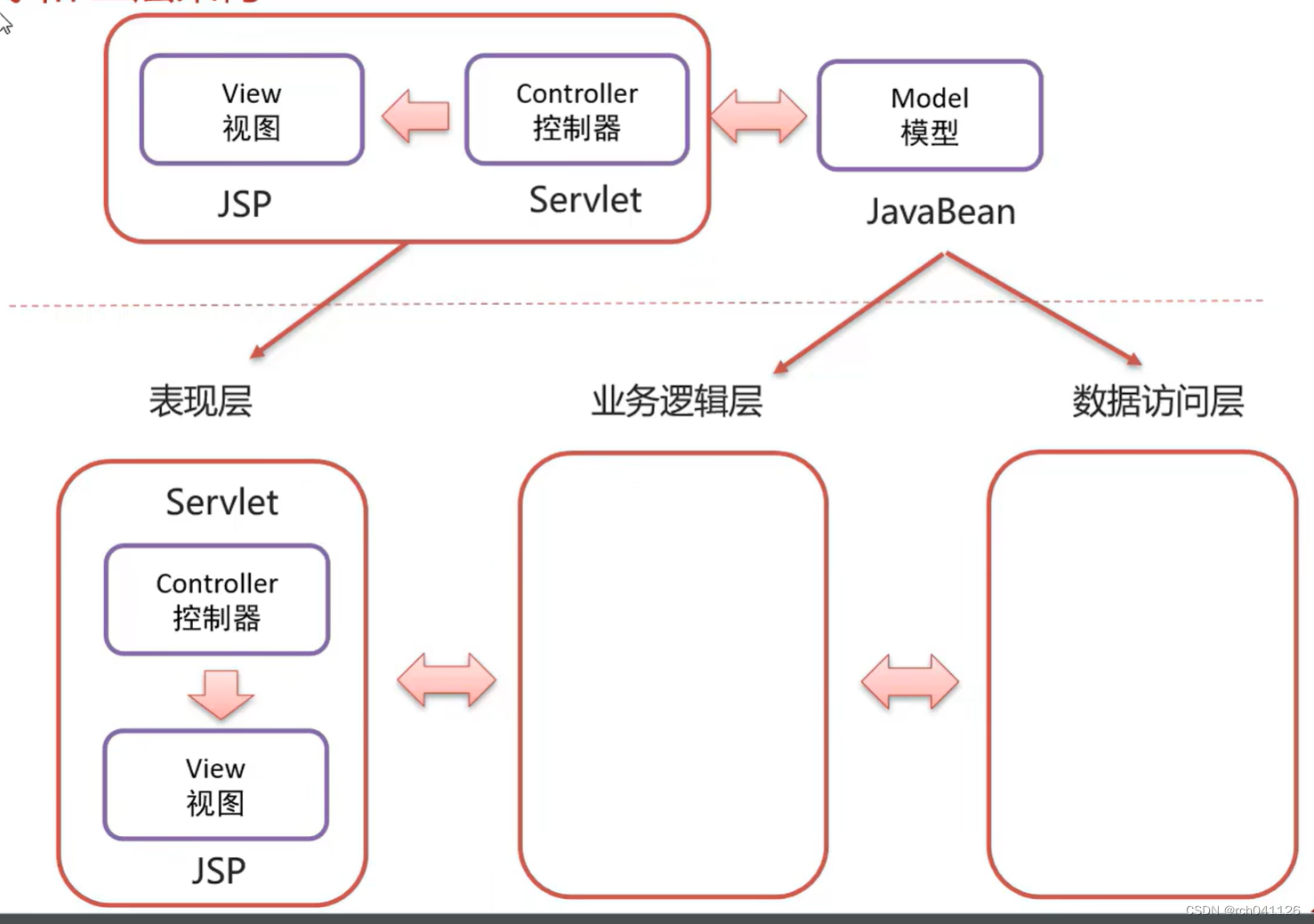






















 2821
2821











 被折叠的 条评论
为什么被折叠?
被折叠的 条评论
为什么被折叠?








